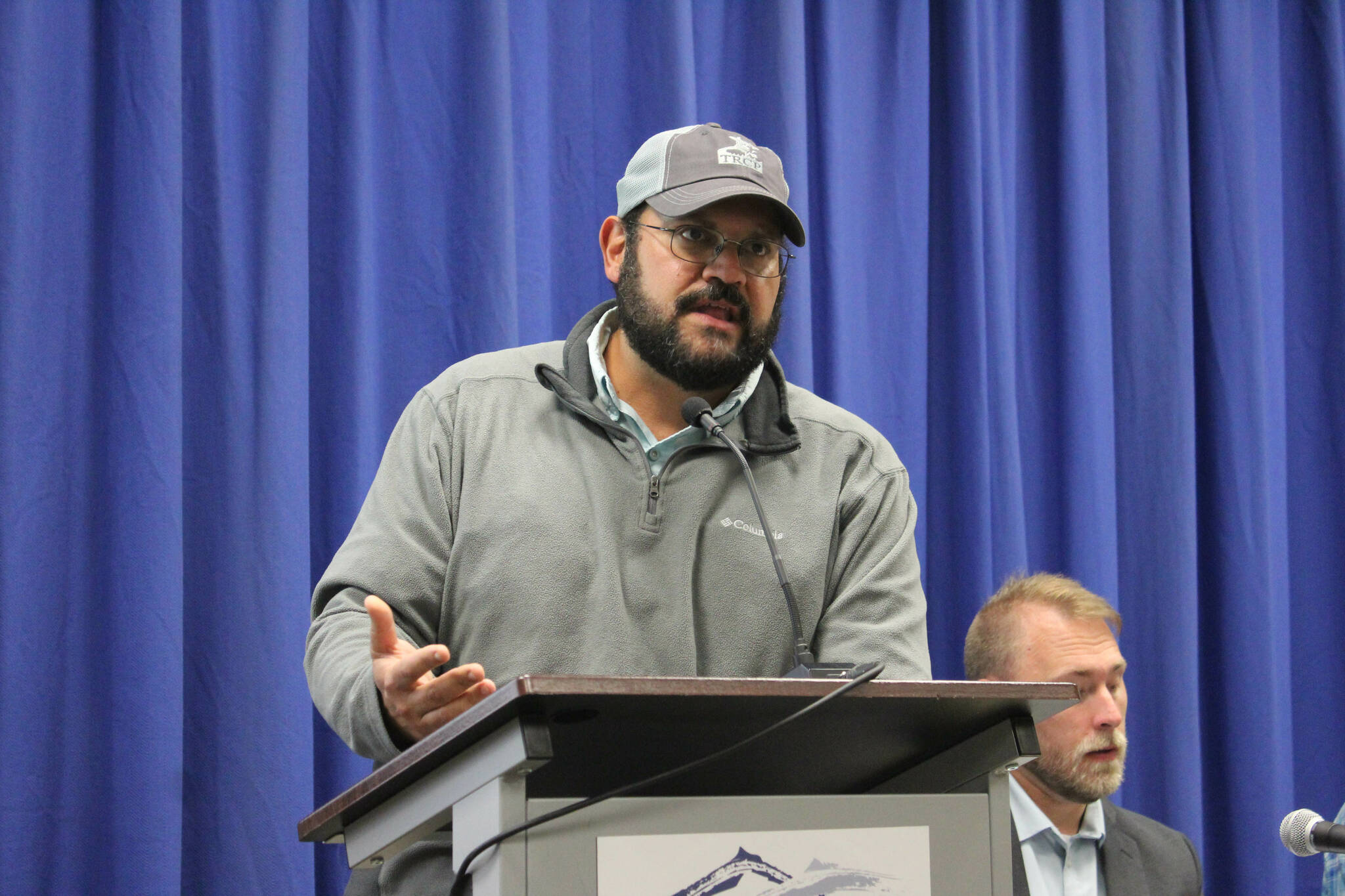Bycatch was the issue du jour at last Wednesday’s annual Kenai Classic Roundtable on Fisheries.
Hosted at Kenai Peninsula College by the Kenai River Sportfishing Association, the three-hour event brought together a who’s-who lineup of fisheries and policy experts from Alaska. That lineup included Alaska Department of Fish and Game Commissioner Doug Vincent-Lang, who said Bering Sea trawling is not responsible for Alaska’s declining chinook salmon runs.
The Magnuson-Stevens Fishery Conservation and Management Act defines bycatch as fish harvested in a fishery that are not sold or kept for personal use. The phrase is sometimes used generally to refer to the capture of fish that are not being targeted by a specific fishery that are discarded.
Throughout the day, attendees heard from U.S. Sens. Lisa Murkowski and Dan Sullivan, Alaska Gov. Mike Dunleavy, National Oceanic and Atmospheric Administration Administrator Dr. Richard Spinrad, and South Atlantic Fishery Management Council member Spud Woodward, among others.
“The urgency is not just here,” Dunleavy said, referring to the Kenai Peninsula. “The urgency is across the state to come up with some solutions — scientific solutions,” Dunleavy said.
“We do recognize that bycatch is an important issue, one that we want to address with the best possible science and most meaningful manner,” said Spinrad.
Vincent-Lang and Woodward spoke as part of a panel called “Bycatch: The Impact on Recreational Fisheries,” which examined the impact bycatch has on Kenai River kings and solutions being implemented in other parts of the country to address bycatch.
Vincent-Lang said that Alaska is constitutionally mandated to manage fisheries for sustained yield. The Alaska Board of Fisheries has adopted a sustainable salmon policy to ensure that the mandate is fulfilled and that offers direction on how to manage fisheries such that they are sustainable. Bycatch affects the sustainability of fisheries, Vincent-Lang said.
There is a lot of interest in the Bering Sea trawl fisheries, which have a hard cap on the number of chinook salmon that can be caught as bycatch with trawlers, Vincent-Lang said. The result is “a relatively clean fishery,” in which one sub-adult chinook salmon is taken as bycatch for every 40,000 pollock taken.
“The bottom line is the numbers do not point to bycatch as being the primary driver for the reduced returns of chinook salmon across Alaska,” Vincent-Lang said. “Instead, evidence is increasingly pointing to changing ocean conditions related to changing climate conditions as negatively impacting chinook salmon.”
Woodward and Doug Lasko, who spoke alongside Vincent-Lang during the bycatch panel, are both addressing bycatch in their respective areas of the U.S. As a member of the South Atlantic Fishery Management Council, Woodward is based in Georgia and has been working to combat bycatch in the South Atlantic Red Snapper fishery.
Lasko is the president of Okuma Fishing Tackle USA and serves as the president of the Coastal Conservation Association of California. His experience with bycatch is in trying to reduce the number of marine species being caught in drift gillnets intended to catch thresher sharks off the coast of California.
The gear, Lasko said, is about 1-mile long and extends 200 feet in the water. It can hang for up to 12 hours and “creates a wall that catches everything in its path.” That includes hundreds of protected marine species, including whales, sea turtles, dolphins and other mammals, Lasko said.
Lasko said stakeholders are trying out different ways to reduce the bycatch, such as deep set buoy gear and legislative action. Lasko said deep set buoy gear has been shown in trials to reduce non-marketable catch to about 2%. That’s compared to the 10-year period between 2004 and 2014, when drift gillnet fisheries discarded about 64% of their catch.
The gear operates such that a flag raises when the gear has fish on the line. The person fishing then must “actively service” the buoy, which results in the fish being kept on a line for a limited amount of time.
The State of California passed in 2018 a law allowing the California Department of Fish and Wildlife to set up a voluntary buyback program for gillnet permit holders, through which the state would buy out fishery permits. Separate legislation, which passed in both the U.S. House and Senate but was vetoed by former U.S. President Donald Trump, would end the use of such large nets in federal waters.
The efforts represent different stakeholders coming together to solve a problem, Lasko said.
“I think that bycatch in many parts of the United States is obviously a very big issue,” Lasko said. “Anything that we can do to be able to reduce bycatch, not just for recreational anglers, but also help improve both commercial fishing and opportunities for recreational anglers should be a priority.”
Kenai Mayor Brian Gabriel serves on Dunleavy’s bycatch task force as a coastal Alaska community representative. He attended the Kenai Classic Roundtable and said Thursday that his biggest takeaway from the event was the role new technology and ways of thinking will play in addressing Alaska’s bycatch issue.
“My takeaway honestly is that innovation is key to combat the bycatch issue,” Gabriel said.
Still, as the task force works to prepare formal recommendations that will be made to the state regarding the issue, Gabriel said policies targeting low abundance may be more effective than those targeting bycatch. There’s no “smoking gun” when it comes to figuring out what’s causing declining chinook runs, Gabriel said, and getting to a place of zero bycatch is a “tall order.”
Wednesday’s full Kenai Classic Roundtable on Fisheries can be streamed in full on Kenai River Sportfishing’s YouTube channel.
Reach reporter Ashlyn O’Hara at ashlyn.ohara@peninsulaclarion.com.


